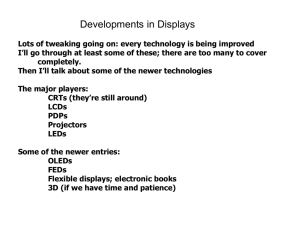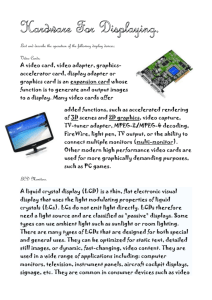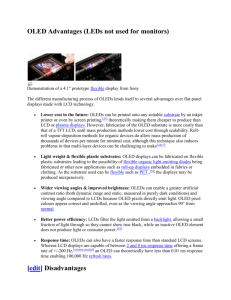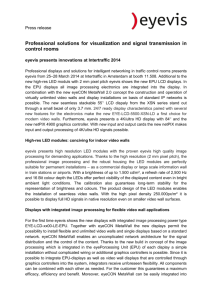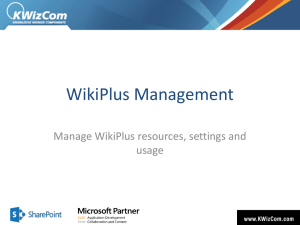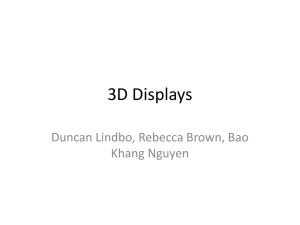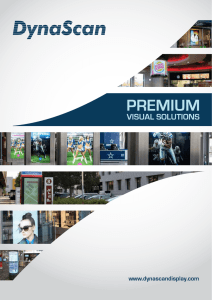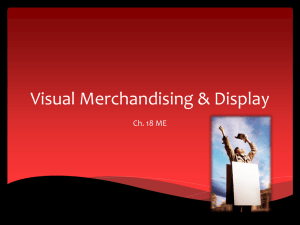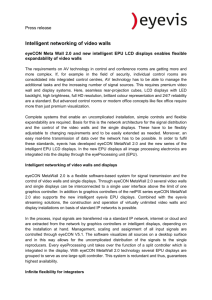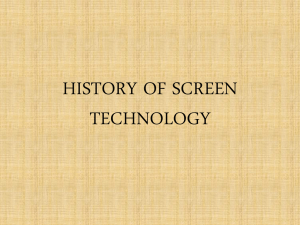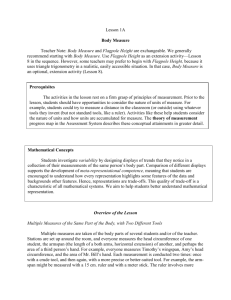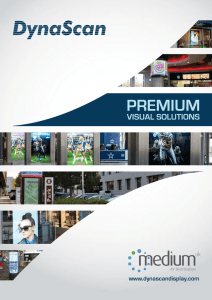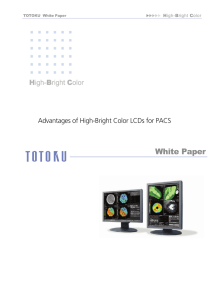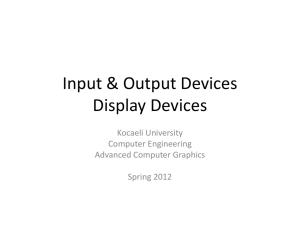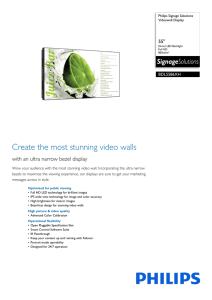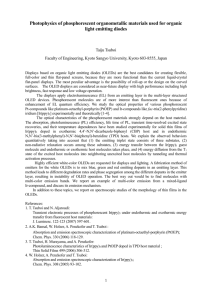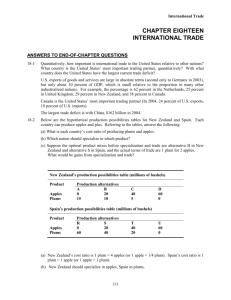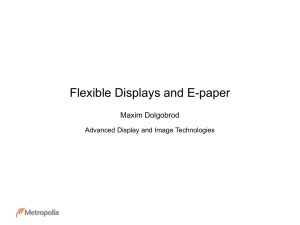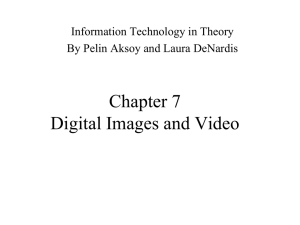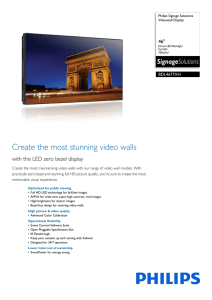Link to PPT slide show. - World View of Global Warming
advertisement
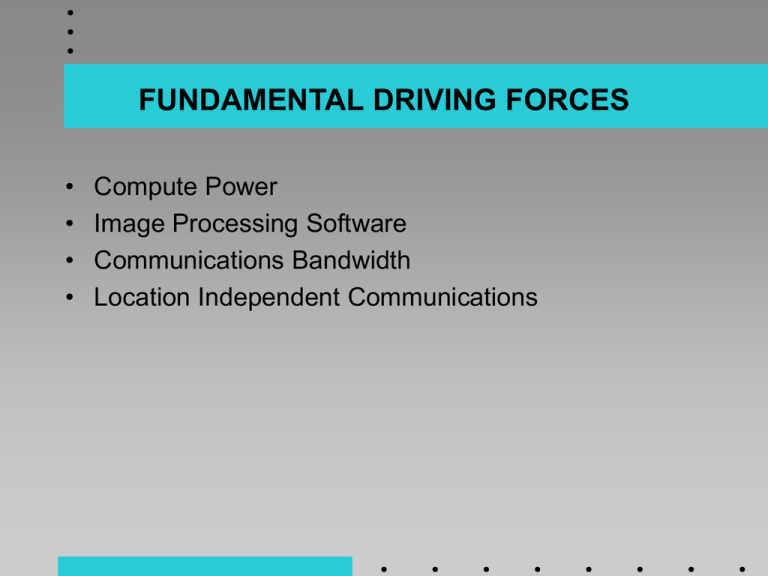
FUNDAMENTAL DRIVING FORCES • • • • Compute Power Image Processing Software Communications Bandwidth Location Independent Communications New Product Trends • • • • • • Limited “Convergence” of Television and Internet Internet Appliances Location Independent - Wearable - Devices Electronic and Interactive Public Displays Display Driven Transactions Display Driven Work Environments THE ELECTRONIC HOME • Homes and Electronics have different life cycles. • Computers, Entertainment, and Communications will continue to dominate home displays. • Computer-controlled Appliances and other integrated functions requiring changes in home wiring or construction will have slow and limited acceptance. • Complicated electronic security systems such as eye recognition will have only a small market. • Reliability and easy repair are important criteria. INTERNET APPLIANCES • • • • • Time Sensitive Information Electronic Commerce Data Searches e-mail Communications Later - Real-time video images • Proliferation of Application Specific Products • Ease of Use - Instant Access (opposite of PC) • Low Cost and Virus Proof Transportation -- Cars, Trains, & Airplanes • Entertainment “Clusters”. • Navigation and Communications. • Minimal Usage for Basic (Dashboard) Information. • Need for Sunlight Readability, Ruggedness, and Long Life. Location Independent Communications • • • • “Wearable” Electronics Increasing Complexity of PDAs Convergence of Communications and Computers Communications and Entertainment Advertising and Public Displays • • • • • • • • • Large Video Walls Kiosks Airports Sports Stadiums Shopping Malls Logo Sites - Transit Vehicles Show Room Display Windows Many Low Resolution Signage Applications Tiled and Conformable TOYS AND GAMES • • • • Intelligent robots. Interactive and Realistic Games. Learning Aids. Virtual Persons. Needed -- Displays that are Versatile and Affordable • • • • Resolution Brightness - Sunlight Readable Low power - Efficient Large Panels - segmented, conformable, low cost Status of Display Technologies • For Image Quality, All Major Display Technologies are now “Good Enough.” • For most Television and entertainment applications, an NTSC (or similar) signal, with image processing, meets consumer needs for displays up to 40-inches. • LCD -- Now the dominant technology for all display sizes. • Plasma -- Various Sizes from less than 35 to 100+ inches • CRT -- Virtually obsolete in the US but still important in other parts of the world. • Projection -- Based on LC and DMD technologies. Currently ALL Display Technologies are “Good Enough” for Viewing in Most Applications • • • • Resolution Color Gamut Contrast Brightness • Brightness in Outdoor Environments • Efficiency (The big opportunity for OLEDs) WHEN IS A DISPLAY “GOOD ENOUGH” • TV -- 500 to 700 Lines Progressive Scan -Depending on Screen Size. 1080p is more than needed for most consumer TV applications. • Computer Monitors -- 1024 x 1280 (SXGA) • Hand Held Devices -- From less than 480 x 640 (VGA) to 600 x 800 (SVGA) for Internet appliances LCDs • The Dominant Flat Panel Display for at least the next decade. • A difficult technology - made to work exceedingly well. – Temperature sensitive – Inherently poor contrast – Poor angle of view – Manufacturing costs high for Active Matrix. – Back light + filters reduce efficiency to less than 10%. • The next decade will see lower cost, even larger sizes, and the use in all products from portable electronics, to computers, to televisions in every size commercially available. THE NEXT 10 YEARS FOR LCDs • The Dominant Display Technology – – – – Computer Monitors (15” - 24”+) Television (20” - 80”+) Laptop Computers “Wearable” Electronics New LED back light technologies are the next big opportunity PLASMA PANELS • The first plasma panels -- direct view gas discharge and monochrome orange color. • Currently the best emissive display technology for larger sizes and video images. • Challenges – efficiency – brightness – cost and manufacturing scale-up Projection Displays • Front Projection for Conference Rooms. • Rear Projection for Entertainment, Video Conferencing, and desk top monitors. • Major Competition from Plasma displays and LCD panels. • Many technology approaches viable -- LCD, MEMS, and combinations of light amplifiers and color converters. • New possibilities for color accuracy and display quality. LEDs • From watches to indicator lights to stoplights to large billboards. – Best sunlight readable emissive display technology. – Blue only recently available. – Efficient - rapidly evolving uses in lighting applications, for projection displays, and for LCD backlights. – More work needed on low-cost arrays and “active” addressing. CRTs • Over 100 Years of development • Still an excellent display technology - superior color rendition, especially for imaging applications. • Too big and too heavy -- nearly obsolete in the US but still widely used in other parts of the world. – 2008 the year that LCDs took over as the major display technology worldwide. OLEDs • Potential Advantages – – – – – – – High brightness High contrast - more than 100:1 High resolution - 12 micron pixels High efficiency - more than 10 lumens/W Wide viewing angle Fast response time - typically in the microsecond range Gray scale easy to achieve • Environmental ruggedness, differential aging, and manufacturing issues are remaining challenges. FEDs • Too Many Promises -- Too Soon! • Potential Advantages – – – – – – Bright - sunlight readable Less than 1/10th the thickness and weight of CRTs Wide viewing angle Wide temperature range Large dimming range >50,000:1 More efficient than backlit LCDs • Fundamental material research is still continuing. • Manufacturing issues have not yet been resolved except possibly by a Sony affiliated company. Need for New Display Materials • Progress in Displays and Lighting Depends on New Materials • The Only “Breakthroughs” Occur at the Materials Level • Wider Applications of Displays and Lighting Technologies Depend on New Materials Developments -- e.g. OLEDs CONCLUDING REMARKS • Variety is good -- but technology infrastructure is driven by large volume applications. • Acceptance Threshold - when is it good enough? • Breakthroughs only occur at the materials level. • Micro-displays and projection technologies offer best new opportunities for specialized applications. • The future is not so mysterious once we understand the rate of progress and the path required from basic materials discoveries all the way to volume manufacturing of products.
